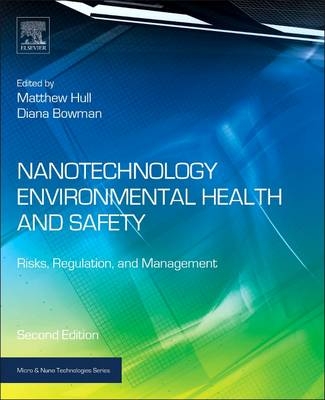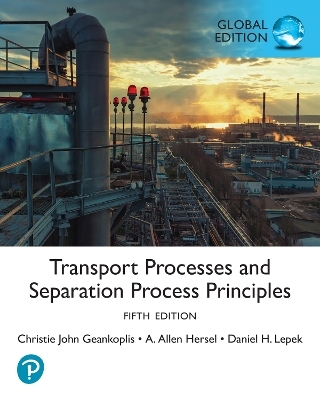
Nanotechnology Environmental Health and Safety
William Andrew Publishing (Verlag)
978-1-4557-3188-6 (ISBN)
- Titel erscheint in neuer Auflage
- Artikel merken
Nanotechnology Environmental Health and Safety, Second Edition focuses not only on the impact of nanotechnology and the discipline of nanotoxicity, but also explains each of these disciplines through in the context of management requirements and via risk scenarios — providing an overview of regulation, risk management, and exposure. Contributors thoroughly explain environmental health and safety (EHS) issues, financial implications, foreseeable risks (e.g., exposure, dose, hazards of nanomaterials), occupational hygiene, and consumer protection.Key new chapters have been included covering eco-toxicity, nanomedicine, informatics, and future threats. New case studies have also been added, including a chapter on the impact of nanosilver on the environment, as well as an assessment of how well lessons have been learned from the past, such as in the case of asbestos. The book also makes a business case for the importance of proactive EHS management - essential reading for existing or prospective producers of nanoscale products.
Matthew Hull has been an active part of the nanotechnology environmental health and safety (EHS) landscape for over two decades. In 2003, he developed the NanoSafe™ framework, which provided an integrated approach for managing nanotechnology EHS risks. That framework led Hull to found NanoSafe, Inc., in 2007, and contributed pioneering programs in web-enabled nanotechnology EHS management systems, nanotechnology waste recovery and recycling processes, third-party test and verification services, and life-cycle ecotoxicological studies of nanomanufacturing. After 16 years as president/owner of NanoSafe, Inc., Hull successfully exited the company in 2023, through an acquisition by ITA International, LLC. Currently, Hull serves as Research Professor in Virginia Tech’s Institute for Critical Technology and Applied Science (ICTAS) as well as Director for the Nanoscale Characterization and Fabrication Laboratory (NCFL) and the Materials Characterization Laboratory (MCL). He also serves as Associate Director for Innovation and Entrepreneurship for the NSF-funded US National Nanotechnology Coordinated Infrastructure (NNCI) and Virginia Tech’s National Center for Earth and Environmental Nanotechnology (NanoEarth). He received his Ph.D. in Civil and Environmental Engineering from Virginia Tech in 2011 and an M.S. in Biology from Virginia Tech in 2002. He received his B.S. In Environmental Science from Ferrum College in 2000. Dr. Diana Bowman is a Professor of Law in the Sandra Day O’Connor College of Law, where she serves as the Associate Dean for Applied Research and Partnerships and the School for the Future of Innovation and Society, at Arizona State University (ASU). Diana is a Co-Director of the Center for Smart Cities and Regions (CenSCR), a Faculty Innovation Fellow with ASU’s University Technology Office and Andrew Carnegie Fellow (2018). Diana’s research has primarily focused on the legal and policy issues associated with emerging technologies including, for example, nanotechnologies, CRISPR and autonomous vehicles. Diana’s second pillar of work is within the sphere of public health law and policy, with a particular focus on road safety, assisted reproductive technologies and water safety. She has published over 150 peer reviewed journal papers and chapters and is the co-editor of 11 books including Reproduction Report (Oxford University Press, with Ludlow and Johnston). Her work has appeared in leading journals such as Nature Nanotechnology, Nature Materials, Law & Policy and Regulation & Governance. As the co-director for CenSCR, Diana lead ASU’s efforts in building out the first smart region in the United States.
1. Introduction
2. What are the warning signs we should be looking for?
3. Are we willing to heed the lessons of the past? Nanomaterials and Australia's asbestos legacy
4. Characterization of Nanomaterials for Nano EHS studies
5. Toxicological Studies with Nanoscale Materials - what we've learned so far
6. Nanomaterials ecotoxicology: a case study with nanosilvers
7. A Case Study of a Nanoscale-Research Facility Safety through Design and Operation
8. A Nanomaterial Registry
9. Two Steps Forward, One Step Back: Shaping the Nanotechnologies Landscape through Regulatory Choice
10. A Nanotechnology Legal Framework
11. Nanotechnology Risk Management: An Insurance Industry Perspective
12. Commercialization of Cellulose Nanocrystal (NCCTM) Production: A business case focusing on the importance of proactive EHS management
13. Nanomaterials and Health - Implications for Medicines, Energy, and Food
14. Nanoinformatics: data driven materials design for health and environmental needs
15. Nano EHS threats of the future
16. Nanotechnology: A Sustainable Industrial Revolution?
| Reihe/Serie | Micro & Nano Technologies |
|---|---|
| Verlagsort | Norwich |
| Sprache | englisch |
| Maße | 191 x 235 mm |
| Gewicht | 1310 g |
| Themenwelt | Technik ► Umwelttechnik / Biotechnologie |
| Wirtschaft | |
| ISBN-10 | 1-4557-3188-9 / 1455731889 |
| ISBN-13 | 978-1-4557-3188-6 / 9781455731886 |
| Zustand | Neuware |
| Haben Sie eine Frage zum Produkt? |
aus dem Bereich


